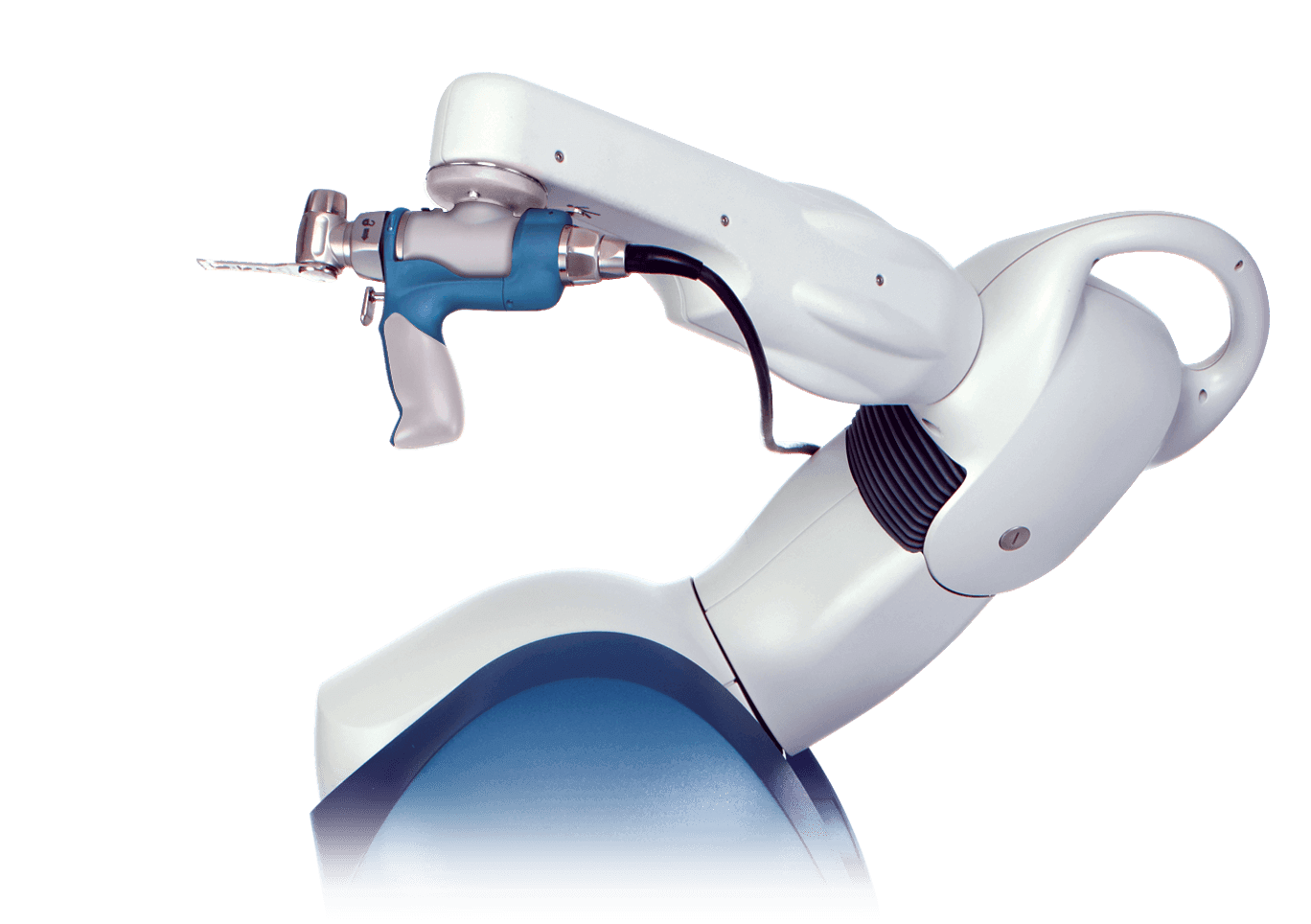Robotic assisted joint replacement surgery uses a robotic arm to guide the bone cuts made during surgery. X-Rays and CT scans are taken prior to surgery, and a model of the joint replacement is generated in computer software. It is designed to deliver more precision and accuracy for hip and knee replacement surgery, to allow patients to get back to the things they love sooner.
The robotic system utilises technology to aid the surgeon as they plan and execute precise knee and hip replacements, that are personalised for a patient’s specific anatomy. The robotic-assisted device does not move or operate on its own and is guided by the skilled and experienced surgeon’s hands.
Robotic-Assisted knee replacement surgery
Prior to surgery a CT scan is taken of your knee, which generates a 3D model specific to your individual anatomy. This allows for very accurate planning of the position of your knee replacement. The computer generates a model for how the knee will function with the new prosthesis through range of motion, and the stability can be assessed using the computer prior to any bone cuts being made or implants being inserted. This can be adapted and modelled multiple times until the perfect match can be found.
During the operation trackers are placed on the femur and tibia. The surface of the bones are mapped and validated with the 3D computer model. The tension in the ligaments around the knee are assessed and the final position of the implants is set to give equal tension in all the ligaments and soft tissue. This results in a balanced and well-functioning knee replacement.
Once the final position of the implants is set, the haptic arm (“robotic arm”) is used by the surgeon to precisely cut the bones as planned, to match the surgical plan. The robot guides the bone saw and prevents soft tissue around the knee from being damaged.
Finally the knee replacement is implanted and the wound is sutured closed.
What are the advantages of robotic-assisted knee replacement?
It offers the potential to refine surgery and allow for greater precision. Mr Russell has performed many traditional and computer-assisted knee replacements, and sees robotic-assisted surgery as the next step forward in technology and innovation. Early studies have found more accurate bone cuts, less surrounding soft tissue (muscle, ligament and tendon) injury, and better recreation of the planned lower limb alignment with robotic surgery. All of these factors may lead to an earlier recovery, with reported less pain and improved mobility.
Robotic-Assisted hip replacement surgery
Prior to surgery a CT scan and sitting/standing x-rays are taken of your hip, which generates a 3D model specific to your individual anatomy and movement. This allows for accurate planning of the size and position of the implants.
During the operation trackers are placed on the pelvis. The surface of the acetabulum is mapped and validated with the 3D computer model. The surgeon then uses the haptic arm (“robotic arm”) to guide the acetabular reamer and the placement of the implant, to precisely match the surgical plan. The femoral component is then trialled and the robot is used to accurately assess leg lengths and offset, to best restore normal soft tissue tension. The final components are then implanted and the wound is sutured close.
What are the advantages of robotic-assisted hip replacement?
Robotic surgery was first developed to improve the accuracy of component positioning and improve the surgeons ability to account for each patients unique anatomy in 3 dimensions. According to international research, robotic arm-assisted total hip arthroplasty is associated with improved functional outcomes, and improved accuracy of component positioning, which can minimise complications such as hip dislocation and earlier than expected wear.










